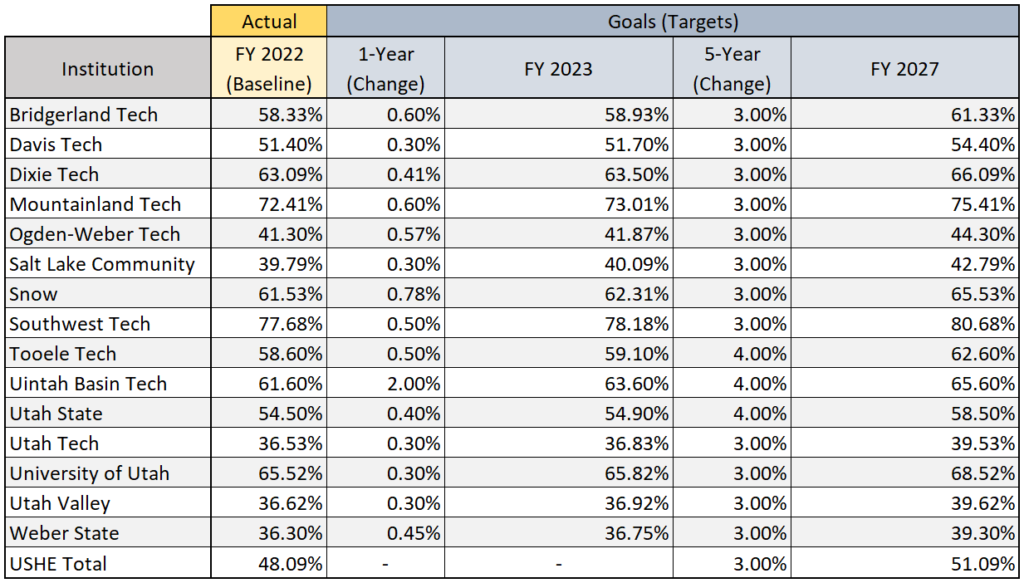In addition to their base budget, Utah’s sixteen higher education institutions have the potential to increase annual funding in aggregate by $35 million beginning in FY 2025 if they meet certain performance goals set by the Board of Higher Education (board). The amount of performance funding is variable from year-to-year, and is defined in statute as the lesser of:
- any remaining Income Tax Fund after all other obligations are met; and
- 20% of the forecasted income tax revenue growth from targeted, high-demand, high-earning jobs as designated by the Department of Workforce Services and the Governor’s Office of Economic Opportunity.
However, starting in FY 2025, the legislature appropriated $35 million from unrestricted state funds (spurred partially by record FY 2022 collections) to the higher education system. The Legislature may opt to transfer this funding into the Performance Funding Restricted Account for later distribution to higher education entities during the 2024 General Session.
By code, 80% is allocated to degree granting institutions, and 20% is set aside for Technical Colleges. Institutions’ performance determines what proportion of their allocation they will earn based on their progress towards five-year performance goals.
The Board of Higher Education sets five-year goals for the entire Utah System of Higher Education (USHE) and each individual institution, which are designed to be complimentary. These five-year goals are then broken down into annual targets for each institution. Performance is measured on three major areas:
- access (the percent of Utah high school graduates participating in the system);
- timely completion (students completing their degree or certificate within 1.5 times the program’s standard schedule); and
- high-yield awards (degrees and certificates in fields with high-demand, high-earning jobs, as defined by the board).
The Legislature approves the systemwide goals and sets them in statute (UCA 53B-7-709). The table below shows the current goals for the timely completion metric according to institution:

The FY 2025 ongoing appropriation will be distributed based on meeting 1-Year goals. If an institution meets or exceeds their goals, it will receive all their allocated performance funding. If an institution does not meet its goals but shows measurable progress towards the targets (increases of greater than zero), they will receive a proportional amount of their performance funding. Institutions not making progress towards their performance goals are not eligible for performance incentives. The board may reallocate leftover funding one-time from underperforming institutions to colleges or universities that meet or exceed performance goals. If an institution does not meet their performance target in a particular year, but later within the five-year period meets or exceeds their goals, the institution would be eligible to increase their ongoing appropriation to account for previously unearned performance bonuses.